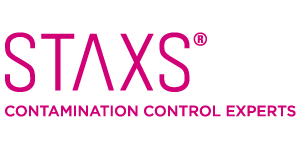Most of the microbial contamination within the pharmaceutical facility can be traced to humans working in cleanrooms. Therefore, risk-based thinking necessitates taking steps to reduce the likelihood of personnel derived contamination and one such measure includes improving and expanding the range of cleanroom clothing. Improvements to the design and degree of coverage provided by cleanroom clothing has developed through an iterative process, with aseptic areas gravitating towards the complete coverage of skin (and with the final piece of the human jigsaw being the introduction of goggles). The contamination control intention is to cover all facial skin and prevent the shedding of droplets and particles.
With the new version of EU GMP Annex 1 (issued in August 2022) a new clothing element was introduced – the requirement to wear cleanroom socks prior to entry into Grade C and Grade B cleanrooms (this is something achieved by undertaking a pre-change, to remove outdoor clothing, in a controlled-not-classified area). This requirement appears on page 20, under section 7.14:
“Outdoor clothing including socks (other than personal underwear) should not be brought into changing rooms leading directly to grade B and C areas. Single or two-piece facility trouser suits, covering the full length of the arms and the legs, and facility socks covering the feet, should be worn before entry to change rooms for grades B and C. Facility suits and socks should not present a risk of contamination to the gowning area or processes.”
With this requirement, personnel need to change from outdoor clothing into suitable tunics, including changing their socks (and shoes) under controlled-not-classified (CNC) conditions, prior to presenting themselves to a Grade C or Grade B changing room. This fits with one of the fundamentals with a facility contamination control strategy: personnel are the primary source of contamination in cleanrooms(2) and the process of minimising contamination begins by reducing the level of contamination presented to changing rooms through special clothing that reduces the particulate emission rate(3). Reducing the microbial load in changing rooms reduces the levels presented to the cleanroom suite.
The reasoning behind the inclusion of cleanroom socks is to address issue of microbial contamination both on feet and on the external surfaces of personal socks, together with the release of oils and perspiration, and the additional risks arising from foot health. These various factors are examined.
|
Want to read the full article? |

